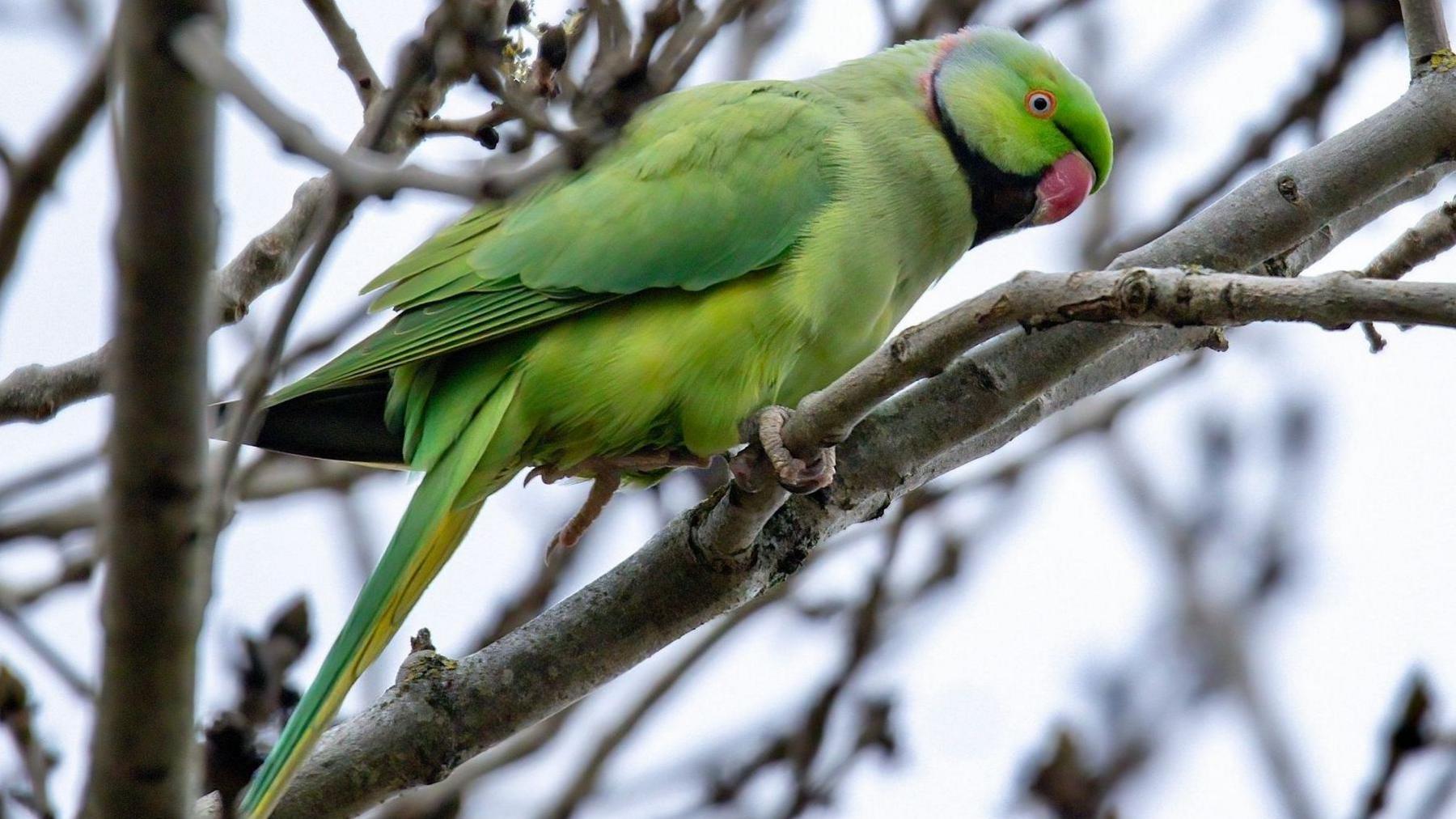Rare sighting of white stork in Northern Ireland
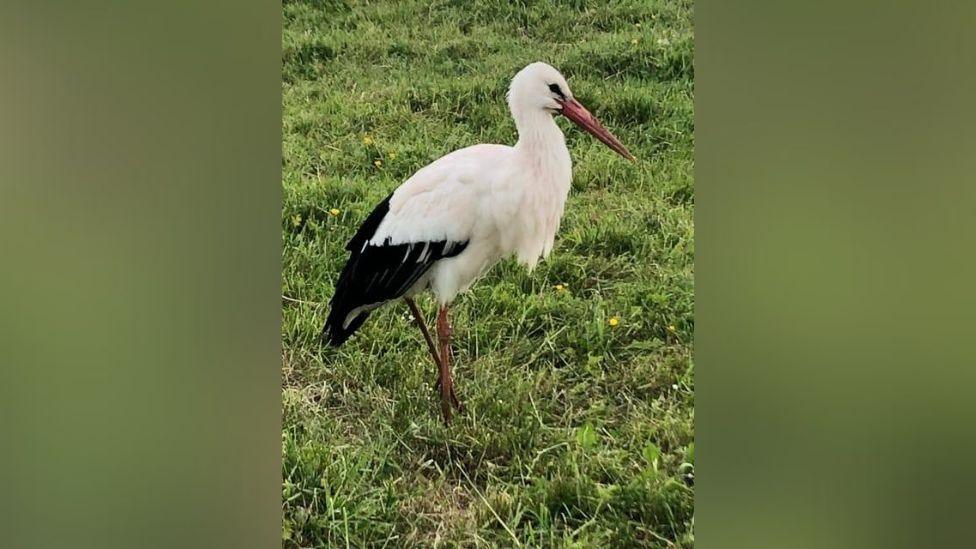
People spotted the white stork in Belfast on Tuesday
- Published
A rare sighting of a white stork has caught people's attention in various parts of Northern Ireland.
The Ulster Society for the Prevention of Cruelty to Animals (USPCA) posted on Facebook that it had received "numerous calls from concerned members of the public regarding an "injured stork over the past two days".
It seems the bird was spotted in Botanic Gardens, Belfast, parts of Downpatrick in County Down and even in Donegal.
A USPCA wildlife officer assessed the stork in Belfast and found it to be "in good health and free flying".
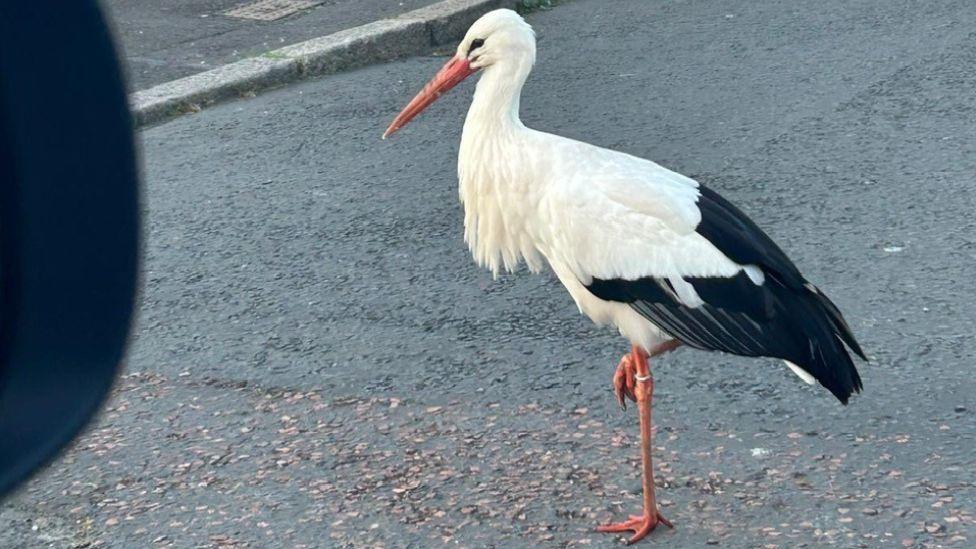
The stork was photographed outside a supermarket on the Ormeau Road on Tuesday evening
Storks are not native to Northern Ireland and the charity has advised the public, especially dog owners, to leave the wildbird alone.
"We would advise the public, not to approach, and give the bird as much space as possible to avoid stress. Dog owners should also be aware around the bird," it said.
The charity added, external that if left alone the stork will move on, but if anyone has further concerns to contact them.
The bird appears to have a metal ring attached to its leg, which might indicate it is from a private collection.
The white stork was spotted in Botanic Gardens in Belfast on Tuesday but seemed to be in good spirits, according to onlookers.
Wildlife rescuer Debbie Doolittle, from Doolittles Wildlife Rescue, took to social media to ask the public not to try and catch the animal, after hearing reports that people had been trying to do so.
"There, at this time, is no need for this bird to be chased, mobbed, grabbed or harassed in any way.
"The stork is currently perfectly fine and healthy.
"It is doing exactly as it knows to do," she added.
She further urged people not to feed the stork.
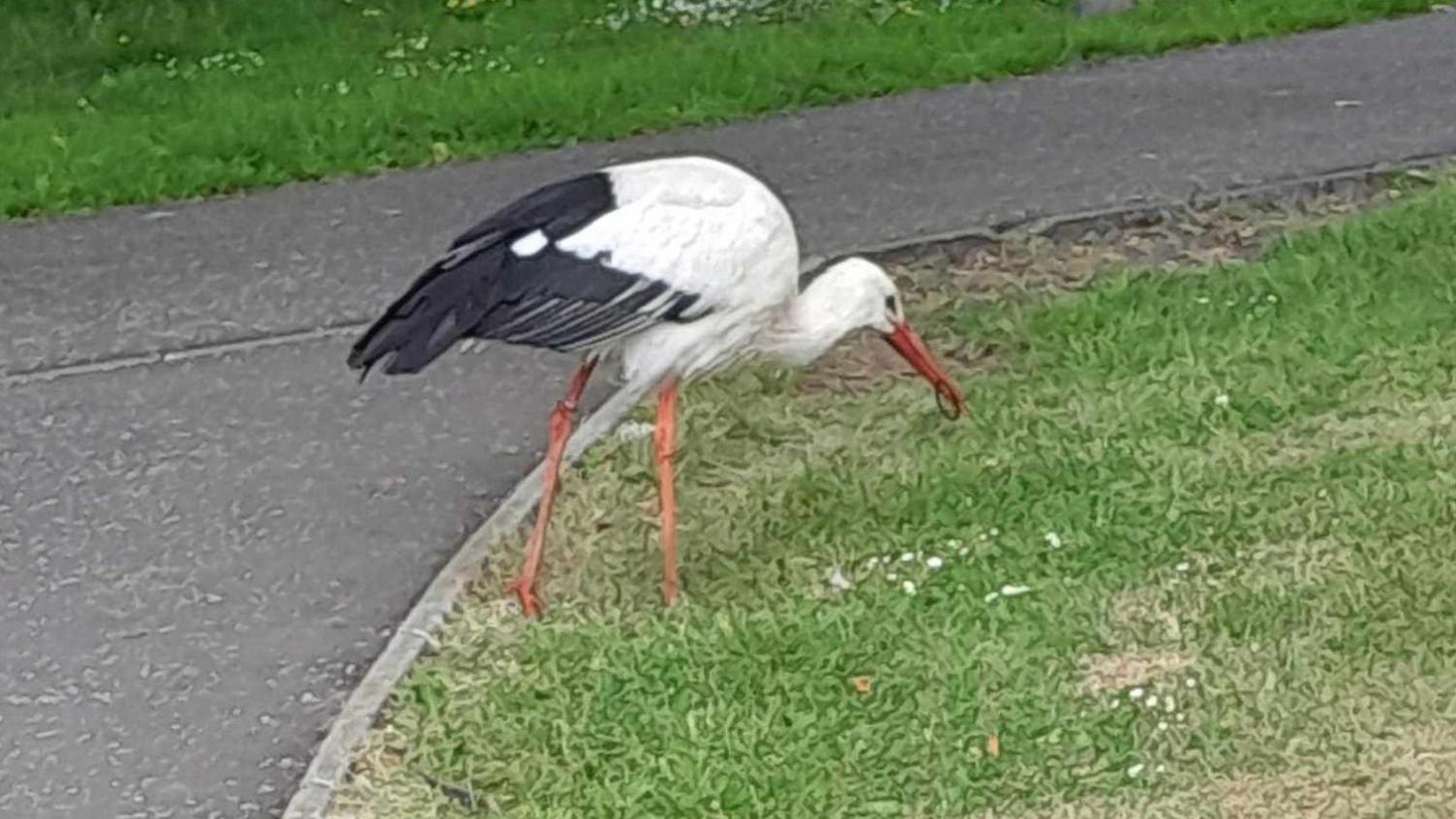
The white stork was also spotted in Botanic Gardens on Tuesday
History of storks on the British Isles
Allow X content?
This article contains content provided by X. We ask for your permission before anything is loaded, as they may be using cookies and other technologies. You may want to read X’s cookie policy, external and privacy policy, external before accepting. To view this content choose ‘accept and continue’.
White storks are a breeding bird of southern Europe, with a red bill and black and white feathers. A small breeding population live in southern England as part of a reintroduction attempt in 2016, according to the charity British Trust for Ornithology, external (BTO).
The only documented record of a pair of white storks breeding in the UK is from Scotland in 1416, when a pair was reported to have nested on St Giles Cathedral in Edinburgh.
The BTO added that, "since the 1960s, white storks have been recorded in small, but increasing, numbers as scarce migrants, some of which have been considered to be of wild origin, while others are likely to have been released or be birds that have escaped from collections or from reintroduction projects, making it difficult to accurately assess their numbers".
Related topics
- Published19 May
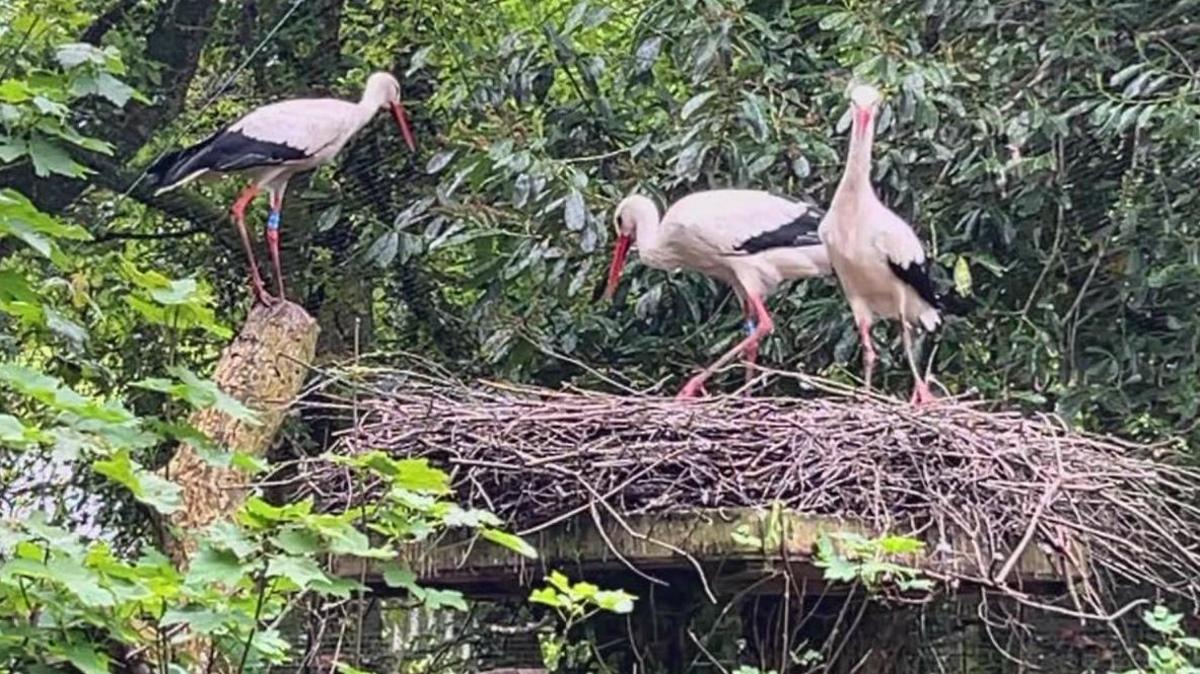
- Published2 March
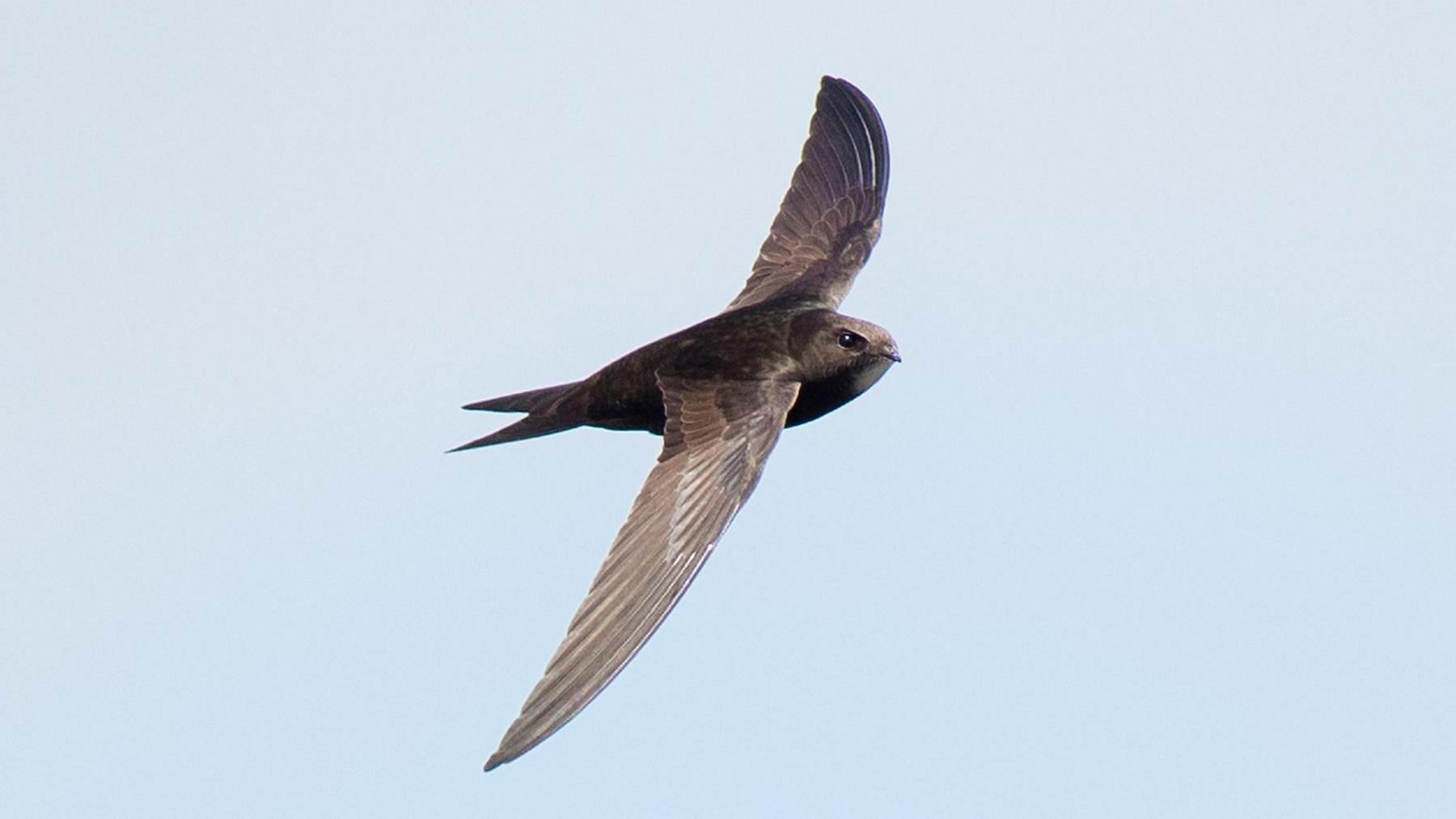
- Published17 April
